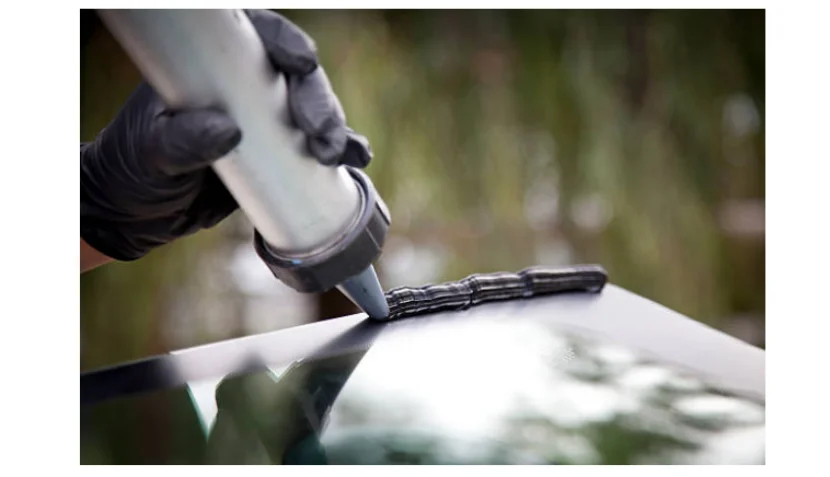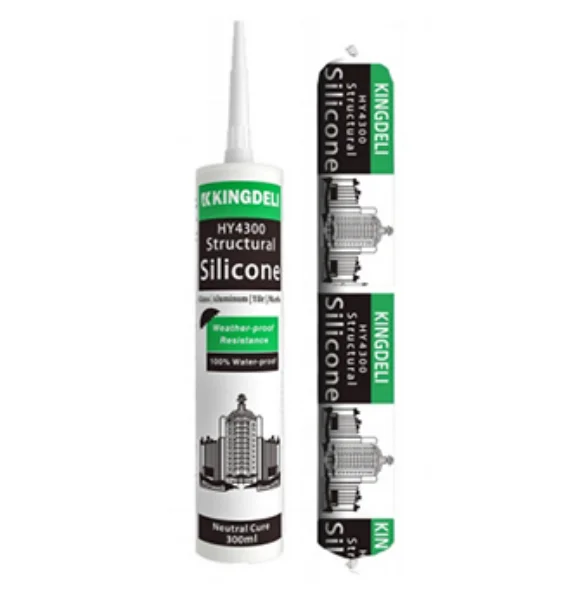How Long Does It Take For Glass Sealant To Dry? How Long Does It Take To Touch Water?


Glass sealants are awesome for keeping windows and glass surfaces tight and leak-free. Knowing how long they take to dry and when they can get wet is super important. This guide explains drying times, when the best window silicone in 2025 can handle water, and easy tips to make your sealant work great.
Factors That Influence the Drying Time of Glass Sealants
Temperature and Humidity Conditions
The weather outside makes a big difference in how fast sealants dry. Warm air speeds things up a lot. Cold air slows them down. Most silicone sealants, like HY-2100 General Use Neutral Silicone Sealant, are made to dry at room temperature, between 4℃ and 40℃. Humidity matters too. Since silicone needs air moisture to harden, damp air can make it set quicker. But for other sealants, too much humidity might slow things down. So, if it’s chilly and wet, drying could take a bit longer.
Type of Surface and Application Thickness
The stuff you’re sealing changes how fast the sealant sets. Glass is super smooth, so sealants dry by grabbing moisture from the air, not soaking into the surface. That makes drying faster on glass than on rough things like wood. But here’s the thing: if you slap on a thick layer of sealant, it takes way longer to dry. Thick blobs block air from getting to the middle. A thin layer dries quicker because air can reach it better.
Ventilation and Airflow Around the Sealed Area
Good air moving around helps sealants dry faster. It carries away extra moisture or stuff that needs to escape. In tight spots with no breeze, like small rooms, drying takes longer. Even good sealants like HY-2300 Outdoor Neutral Silicone Sealant need air to work well. So, crack a window or use a fan to keep things moving.
Typical Drying Times for Different Glass Sealants
Initial Skin Time vs Full Cure Time Explained
Sealants dry in two steps. First, they get a skin. That’s a dry layer on top you can touch without it sticking. This happens fast, often in minutes for silicone sealants. The second step is full curing. That’s when the sealant gets hard all the way through. For HY-2300 Outdoor Neutral Silicone Sealant, the skin forms quick, but full curing might take 24 hours or more, depending on the weather.
Drying Time for Glazing Silicone in Standard Conditions
At normal room temperature, like 25℃ with 50–60% humidity, glazing silicone stops feeling sticky in 10 to 20 minutes. That’s when it gets a skin. But to get fully hard, it takes about 2 to 3 mm per day. So, thicker layers need a few days to set completely. For example, HY-3300 Weatherproof Neutral Silicone Sealant starts skinning in 10 to 20 minutes but might need several days for deep parts to harden.
How Long Before Kingdeli Sealant for Window Can Be Exposed to Water
When you use HY-2100 General Use Neutral Silicone Sealant as a sealant for window projects, keep water away for at least 24 hours. It gets a skin fast, but it needs time to form a strong, waterproof layer. Waiting stops water from messing up the bond.
Comparing Polyurethane, Silicone, and Acrylic Sealants
Polyurethane Sealant vs Silicone Sealant vs Acrylic Sealant: Drying Performance
Each sealant works differently:
- Silicone: Uses air moisture to harden. It gets a skin in 10 to 20 minutes and fully sets in 24 to 72 hours.
- Polyurethane: Needs moisture too but takes longer, like 48 hours or more to fully harden.
- Acrylic: Dries by losing water to the air. It gets a skin in about an hour but can take days to fully set.
Water Resistance Capabilities of Each Type After Application
Once it’s set, silicone is the best at keeping water out. HY-3300 Weatherproof Neutral Silicone Sealant stays strong from -50℃ to +200℃, even in wet weather.
Polyurethane is good too but can struggle during early drying if water hits it.
Acrylics need to be fully dry to handle water, so they’re better for indoor jobs where it’s mostly dry.
Situations Where One Type Outperforms the Others
Silicone is your go-to for outdoor windows or glass that faces sun, rain, or cold. It’s tough against UV rays and stays stretchy, making HY-4300 Structural Silicone Sealant a solid pick for big projects. Polyurethane is better for heavy jobs, like sticking concrete or metal together, where you need extra strength. Acrylics are great for indoor stuff, like sealing trim, because you can paint over them.

How Soon Can Kingdeli Glass Sealants Be Exposed to Water?
Recommended Waiting Period Before Contact with Rain or Moisture
Kingdeli says to wait at least 24 hours before letting sealants like HY-4300 Structural Silicone Sealant or HY-2100 General Use Neutral Silicone Sealant get wet. This gives the sealant time to form a strong skin. If it’s super humid or the sealant’s thick, waiting a bit longer, like 48 hours, is safer.
Risks of Premature Water Exposure During Curing Phase
If water touches the sealant too soon, it can mess things up. It might bubble under the surface, weaken the stick, or not seal right. This is a big deal for window projects where leaks could cause trouble. Waiting makes sure your sealant for window stays tight and strong.
Best Practices to Ensure Full Waterproof Bond Formation
To get a great seal:
- Keep the temperature between 5°C and 35°C.
- Don’t use too much sealant; stick to the size the package says.
- Use backer rods for deep spots to control how much you apply.
- Wait before putting in glass panels or letting water near the sealant.
These steps help the sealant stick tight and keep water out.
Application Tips to Optimize Drying and Curing Times
Preparing the Surface Properly Before Applying Glass Sealant
Cleaning is super important before sealing. Wipe the glass with an alcohol cleaner or soapy water, then dry it well. Scrape off old sealant with a knife or tool.
Using Tools and Techniques That Promote Even Application and Faster Cure
Use a caulking gun to squeeze out a nice, even line of sealant. Don’t leave gaps that trap air. Smooth it with a spatula dipped in soapy water within a few minutes for a clean look. This helps it dry evenly. Thin layers dry quicker because air gets to more of the sealant.
Storage, Shelf Life, and Usage Guidelines for Optimal Results
Keep sealants like HY-2300 Outdoor Neutral Silicone Sealant in a cool, dry spot below 25°C, away from sunlight. They’re good for 9 to 12 months, depending on the package. Check the expiration date before using. Old sealant might not dry right, even if you do everything else perfectly. Foshan Kingdeli Viscose CO., LTD. offers customization services for special needs.
Frequently Asked Questions (FAQ)
How long should I wait before exposing my window sealant to rain?
Wait at least 24 hours after using Kingdeli sealants like HY-2100 before letting them get wet. This keeps the seal strong.
What happens if I expose glazing silicone too early?
If water hits it too soon, the sealant might bubble, lose stickiness, or not keep water out. It could also look weird.
Can I speed up drying by using heat?
A little heat might help the skin form faster, but too much can mess up the sealant or make it dry unevenly. Room temperature is best.
Which Kingdeli product is best suited for outdoor window sealing?
HY-2300 Outdoor Neutral Silicone Sealant is awesome for outdoor windows. It stays strong from -50℃ to +150℃ after drying.
Is acrylic sealant suitable for wet environments?
Not right away. Acrylics like HY-972 need to fully dry to handle water, which takes longer than silicone. They’re better for indoor spots.
Explore Kingdeli’s cool range of sealants for all kinds of projects, from home windows to big buildings. Since starting in 1998, Foshan Kingdeli Viscose CO., LTD. has grown into a major maker of sealants, adhesives, and coatings in Foshan, China. Contact them to learn about customizable solutions!
